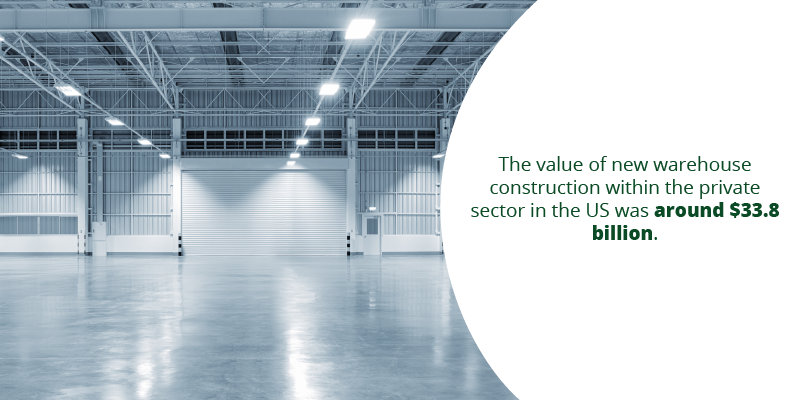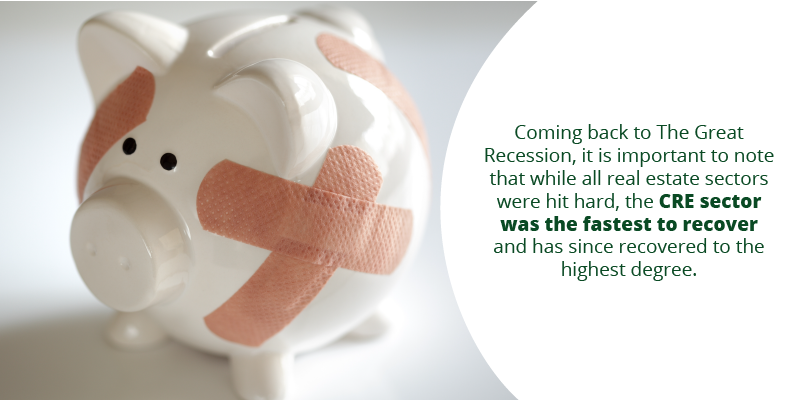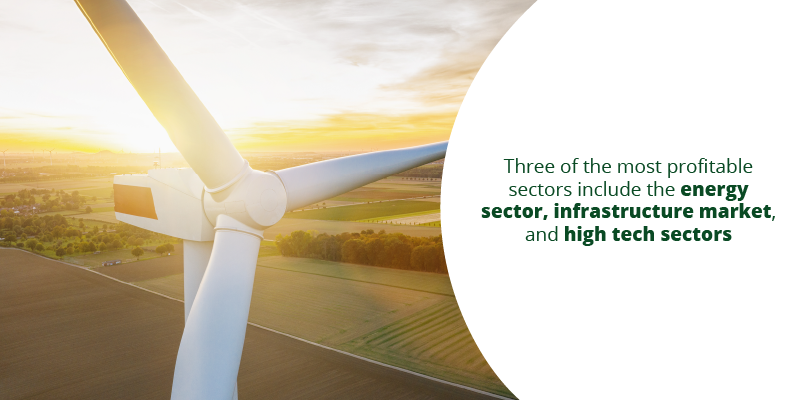Commercial real estate is a major influencer of our local, state, and national economy. For those of us in the industry, we understand the symbiotic relationship between commercial real estate and overall economic health. With many financial experts predicting a recession in the coming months or years, today we will be taking a look at the current state of commercial real estate by the numbers.
Commercial Real Estate Facts Facts and Figures
To start things off, let’s take a look at some high level CRE statistics. According to statista.com, the first half of 2019 brought us the following numbers:
- The value of commercial construction for new projects and additions to existing properties in the US was approximately $89.52 billion.
- The value of private office new construction projects was around $8.12 billion.
- The value of new warehouse construction within the private sector in the US was around $33.8 billion.
- The value of lodging (hotel) construction in the US was valued at about $30.76 billion.
- By Q3 2020, it is estimated that U.S. office vacancy rates will hover around 12.5%, retail vacancy rates will be at 13.9%, and industrial vacancy rates will sit at around 6.5%.
- There were 4,577 restaurants and/or bars opened in the US in 2017 and 2018 combined.
Commercial Real Estate Trends Over the Past ~20 Years
All of those numbers in a vacuum can mean different things to different people. $89.52 billion might seem like a healthy number, but how does it stack up in the US CRE market worth upwards of $17 trillion? To understand the health of CRE, let’s take a look at some recent trends.
The volume of commercial real estate transactions in the US is cooling off.
In terms of CRE transactions completed, the industry has been tapering off since hitting its recent peak in 2015. In 2011, commercial real estate transactions totaled just $96 billion dollars. That number steadily rose to 2007, where it reached an all-time high of $580 billion. That was directly before the real estate collapse and the Great Recession of 2007-09. In 2009, the total value of CRE transactions dipped to $71 billion. Again, this number recovered quite quickly until 2015, where it neared 2007 levels at $569 billion. Since 2015, the volume of CRE transactions by dollar amount has gone down every year. This number reached $394 billion in 2018.
The commercial real estate industry has mostly outperformed other real estate sectors
Coming back to The Great Recession, it is important to note that while all real estate sectors were hit hard, the CRE sector was the fastest to recover and has since recovered to the highest degree. The US commercial real estate industry has also “ increased faster than the Real Estate and Rental and Leasing sector overall.” The commercial real estate industry remains strong, and is “the 1st ranked Real Estate and Rental and Leasing industry by market size and the 2nd largest in the US.”
Commercial Real Estate Investment Trends
So far we have talked about overall CRE health and growth, but what about investment activities? Here are a few key facts and figures on commercial real estate investment.
Multifamily Units are an investor favorite in the CRE market
From 2009 to 2017, the multifamily home sector has quadrupled. Hitting an industry low during the Great Recession, multifamily homes have since been a huge hit for investors, outperforming traditional single family investments by about double. In 1999, approximately 13% of newly constructed multifamily buildings included 50 or more units. That number has since grown to over 50% of newly constructed multifamily buildings having 50 or more units in 2017.
CRE Investors are turning towards senior citizen needs
A major driving force in the commercial real estate market today is the aging population of the US. This is causing many CRE investors to look into housing solutions for senior citizens, but that is just one piece of the puzzle. Older Americans also will require more medical facilities, different types of multifamily homes, and much more.
CRE Investors are eyeing the energy, infrastructure, and high tech sectors
Last but not least, the commercial real estate industry is following overall US economic trends. Three of the most profitable sectors include the energy sector, infrastructure market, and high tech sectors. Savvy CRE investors will understand that these sectors are relatively safe bets for overall growth in 2020 and beyond, and are therefore relatively safe bets for commercial real estate projects. With the White House continuing to make promises in the areas of infrastructure and many state and local governments shifting towards renewable energy options, the opportunity for growth is there.
Going Forward
Commercial real estate as an industry and as an investment opportunity is in a healthy place in 2020. There is no longer a steady, rapid growth as was experienced after 2007, but the market has leveled off in a sustainable way. Despite calls for an imminent recession, real estate experts have all but unanimously declared that the next recession will not hit the real estate market like it did over 12 years ago. Going forward, there are more reasons than not to remain bullish on CRE investment.




